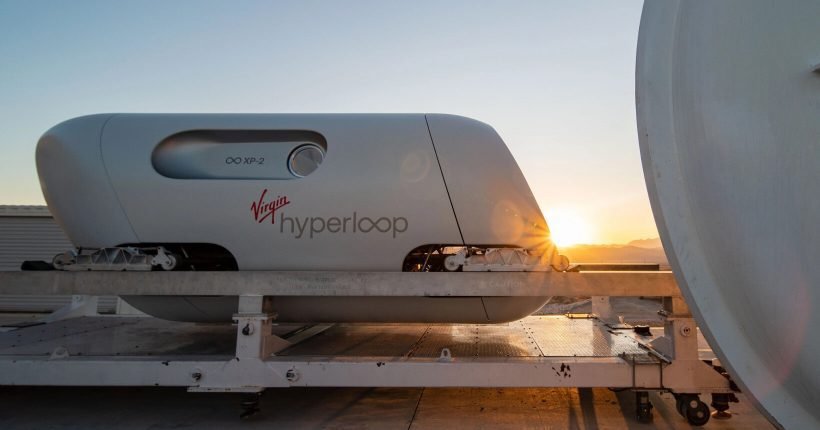The first Hyperloop test in Nevada was a success. It’s a new means of transportation on tracks inside a semi vacuum tube.
Source: dezeen
For the first time, two human passengers have travelled in one of Virgin’s levitating hyperloop capsules, which was sent at 100 miles per hour (160,93 km/h) through a near-airless tunnel in the Nevada desert.
Josh Giegel, CTO and co-founder of Virgin Hyperloop, and Sara Luchian, Virgin Hyperloop’s director of passenger experience, were the two passengers to ride the new form of transportation for the first time on 8 November.
The 15-second-long test trip was carried out by the company at its DevLoop site 35 miles north of Las Vegas in Nevada, which comprises a 500-metre concrete tube located in a barren stretch of desert.
The maiden voyage took place in the newly released two-seater XP-2 vehicle, designed by Bjarke Ingels Group (BIG) and Danish studio Kilo Design, which was built to demonstrate that passengers are able to travel safely inside a hyperloop pod.
The Virgin Hyperloop plans to build pods for 28 passengers, that can reach a speed of 760 mph (1223,10 km/h) in a longer track. The XP-2 vehicle and its interior respectively.


After the passengers were strapped into the capsule’s plush white seats, an airlock system was used to bring the pod in and out of the semi-vacuum environment.
The system employs mag-lev — the same technology that is used by high-speed trains in Japan. The electromagnetic levitation of the train means there is no friction, unlike traditional trains that run on tracks.
The pod, which was nicknamed Pegasus for the test, is mounted on several wheels that retract as the magnetic levitation comes into force to avoid any drag.
The semi vacuum tunnel minimizes air resistance. This means of transportation has the potential to replace commercial airlines, at least in regional travels.


